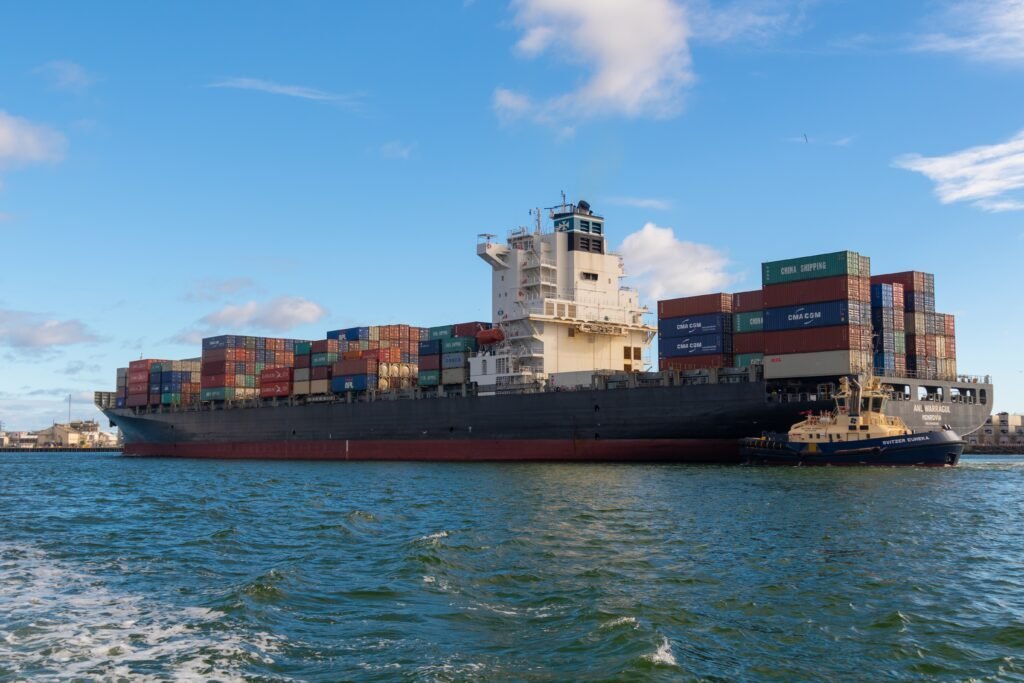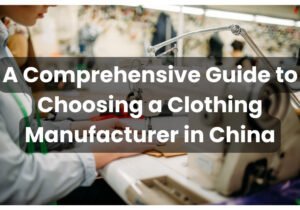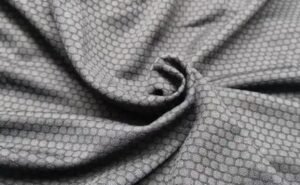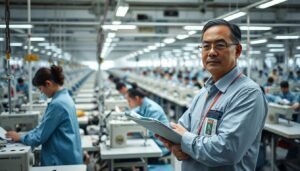As we all know, China’s apparel manufacturing industry is internationally renowned. According to China’s General Administration of Customs, China’s textile and apparel exports reached 26.20 billion U.S. dollars in September 2023, which is a significant improvement compared with the previous months. Relevant experts said that with the arrival of the peak selling season in the fourth quarter, China’s textile and apparel exports are expected to continue to improve. As clothing brands, how to import clothing from China has become a question they must think about. If you are not familiar with this topic, this article will guide you through the process of importing clothes from China.
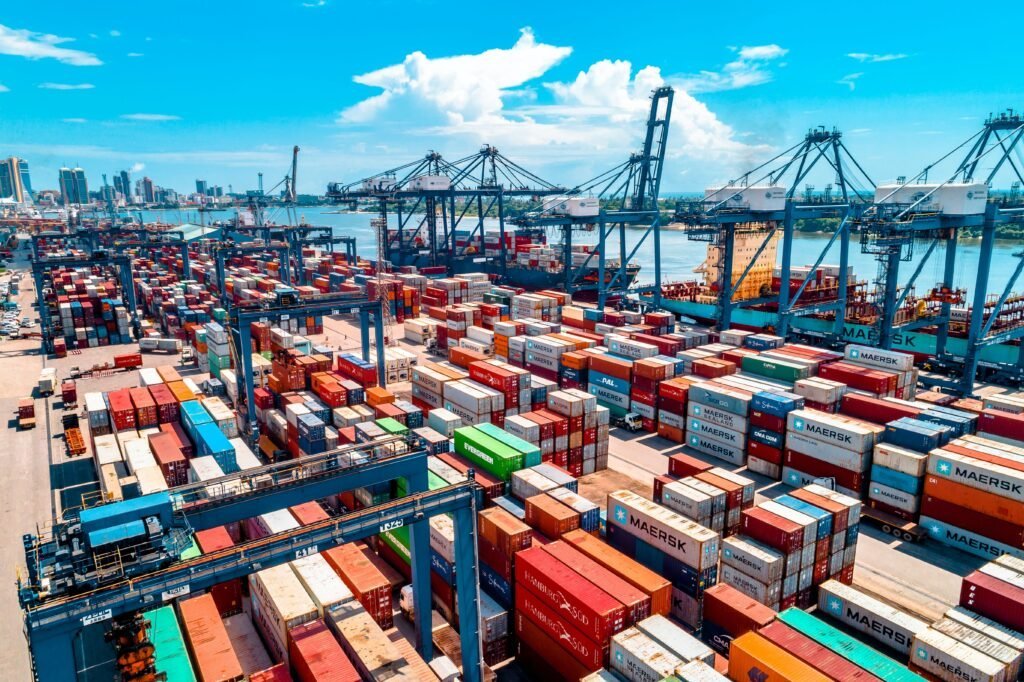
Introduction of Chinese Apparel Manufacturing Industry
From 1978 to 2023, China has witnessed the development of its apparel industry. It starts from traditional folk handicrafts to highly relying on mechanization. The production mode and operation mode of the apparel industry also have drastic changes. Before 1978, China’s apparel industry was driven by small-scale folk enterprises and handicrafts. Since 1978, with the implementation of the socialist market economy, China’s garment industry began to enter a new period of large-scale production. The emergence of garment enterprises and the gradual development of branded apparel has also allowed China’s garment industry to achieve rapid development.
China has now become the world’s largest apparel manufacturer, together with some of the larger department stores or chain clothing network, China’s apparel industry has formed a more complete market system. The current economy of China’s apparel industry continues to develop. Domestically, China’s apparel industry innovation ability continues to improve. China’s clothing in the international market has also aroused a strong interest in the business. Chinese apparel enterprises are joining the competition of the international market in various countries, and they achieve a lot in the international market.
In recent years, the international competitiveness of China’s garment industry is increasing. As can be seen from the current statistics, among 125 economies, the price consumer index (PCI) ranking of China’s apparel industry has risen from last year’s 27th to the sixth place, becoming one of the top three apparel consumer markets in the world. In addition, at the World Trade Conference (WTC), China’s apparel industry also gave positive support to enterprises in seizing the opportunity of industrial change and accelerating the development of “Smart Manufacturing” with the help of intelligent, digital and humanized manufacturing technologies.
The development prospect of China’s apparel industry is still promising. China’s foreign trade is becoming more and more open, and China has become the world’s largest apparel exporter. In the future, China’s apparel enterprises will continue to improve the innovation, research and development capabilities, so that all areas relating to China’s apparel industry make continuous progress. The fruits of China’s apparel industry going global will also equalize domestic consumption and distribute social income evenly, resulting in a more balanced consumption growth, making China’s apparel industry more prominent in the international market, and giving more consumers the opportunity to know the level and characteristics of China’s apparel industry.
Benefits of Importing Clothes from China
With the globalization of the economy, the exchange between industries in different countries has become increasingly close. Clothing industry is no exception. Many famous foreign clothing brands choose to import clothes from China. Below are the five main benefits of importing clothes from China.
Low Labor Costs
China’s labor costs are now much lower than in Europe, but the efficiency of Chinese workers is much higher than that of workers in other countries. Taking Bangladesh as an example, the country is also in Asia, the work efficiency of garment production workers in Bangladesh is lower. The work efficiency of one Chinese worker is roughly the same as that of four Bangladeshi workers. So, a Chinese worker is equal to four Bangladeshi workers. Therefore, importing clothes from China will reduce the labor cost compared to importing clothes from other countries.
Low Raw Material Transportation Costs
China has a great advantage in fabrics. Take cotton as an example, China’s cotton planting area reaches 3,168.9 thousand hectares, and the annual output of cotton reaches 5,910,500 tons. Cotton occupies an important position in China’s national economy. China is not only a global cotton growing country, but also a global cotton consuming country. China’s cotton textile production capacity accounts for about half of the total global production capacity. As a result, China does not need to import large quantities of raw materials for the manufacture of garments, which reduces the transportation costs of raw materials.
Higher Quality
China has hundreds of years of garment processing experiences, which is advantageous in the production of different kinds of clothes. China is the world’s largest apparel producer and has rich experience in apparel manufacturing. China’s textile and apparel exports amounted reaches US$323.34 billion in 2022, hitting a new record high. Almost all luxury and well-known brands in the world are looking for high-quality manufacturing enterprises in China. The reason behind this is that China has highly qualified industrial workers, as well as a well-developed production and supply chain system that can guarantee the quality of the clothes produced.
Shorter Time Needed
Production in China is faster than in other countries because Chinese workers are more efficient. At the same time, the logistics industry in China is more developed and can deliver clothes to the target country in a shorter period of time. If a Southeast Asian country imports clothes from China, it takes about seven days for the clothes to be delivered after production. If a European country imports clothes from China, it takes about four weeks for the clothes to be delivered after production.
Flexible Payment Methods
There are many different payment methods available in Chinese factories, so if you want to import clothes from China, you can choose the right payment method to pay. Here are the introductions of four of the main payment methods.
1. Documents against payment (D/P)
This method of payment is undertaken by the bank for collection. After the goods are loaded out, the seller sends the bill of exchange and documents to the buyer through the bank to collect the payment. Only after the bank receives the payment, the clothes are handed over to the buyer.
2. Documents against acceptance (D/A)
This method of payment is also undertaken by the bank for collection. The main difference between this payment method and D/P is that the buyer only needs to accept the seller’s bill of exchange to obtain a document to take delivery of the goods. The payment must be made after an agreed period of time (usually 60 to 90 days).
3. Open account
In this method of payment, the seller sends the documents to the buyer after the goods have been shipped for export. Debits are on the buyer’s account with the payment for the goods. Then the buyer settles the account in accordance with the agreed period of time. With this method of payment, the seller bears a greater risk.
4. Letter of credit (L/C)
his is a written document issued by a bank with a conditional promise to pay. This is the usual use of letters of credit in international trade. The bank (issuing bank), according to the buyer (the issuer) of the request, issued to the seller (the beneficiary) a payment of certificates. As long as the seller submit the documentation in a certain period of time, the bank pays for the goods. In the letter of credit payment conditions, the bank serves as a first payer.
Steps for Importing Clothes from China
Importing clothes from China will be of great benefits to your business. In order to make this process smooth, you should follow the six steps below.
Step 1. Learning and choosing the right Chinese clothing manufacturer
A right manufacture will be of great help to your business. In order to choose a suitable manufacture in China, first, you should learn about different types of clothing manufactures and make your choice. Then, you should evaluate the manufacturers carefully and make your final decision. Lastly, you have to be cautious so that you won’t fall into the traps.
Step 2. Making a requirements sheet and send it to the Chinese manufacturer
You need make a requirements sheet. In the requirements sheet, you need to write down your requirements. For example, the requirement of fabric, printing method and size. After finishing the requirements sheet, you need to send the requirements sheet to the Chinese manufacturer. The Chinese manufacturer will make a quotation based on your requirements sheet.
Step 3. Learning the quoted price from the Chinese manufacturer
A clothing manufacturer will quote a price based on the technology used in the production process, the number of the clothes ordered, and the materials used in the production process. You need to learn about the manufacturer’s quote and determine if it is within your budget. If you are happy with the quoted price, you can proceed to the next step. If you feel that the quote is not reasonable, you can talk to the Chinese manufacturer and come up with a mutually satisfactory quoted price.
Step 4. Determining specific details and drawing up contracts
Trade contracts are the most basic means of conducting transactions in goods for enterprises operating import and export businesses in various countries. This kind of contract is not only related to the interests of both parties, but also to the interests of the country as well as the relationship between countries. So, international trade contracts are of great importance. Before drawing up the contract, we need to clarify the rights and obligations of both parties and reach a consensus on some issues. This way we can maximize the protection of the rights and interests of both parties.
Step 5. Inspecting the samples
Clothing sample inspection means that we inspect the first clothe produced from different aspects and decide whether to put into mass production or not. Through the inspection of clothing samples, we can fully understand the technical requirements and quality standards of the clothing production process, and can guide the production of clothes more effectively. We can display the qualified garment samples to ensure the standardization of operation in the production process.
Step 6. Receiving clothes
Now that your manufacturer has finished producing the clothes you ordered, they will ship them to you. You need to check the documents needed and present them to an officer on the dock when you receive the clothes. After receiving the clothes, you need to carefully go through them to check the quantity and quality of the clothes. If you find any problems in this process, you need to tell your manufacturer and let it come up with a solution.
Conclusion
To sum up, this article introduces the background of China’s Apparel Manufacturing Industry, thus helping us better understand the benefits of importing clothes from China. Furthermore, it also tells us how to import clothes from China. If you have more questions regarding to importing clothes from China, please do not hesitate to contact us for further inquiries.

